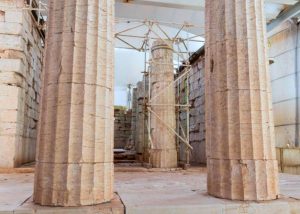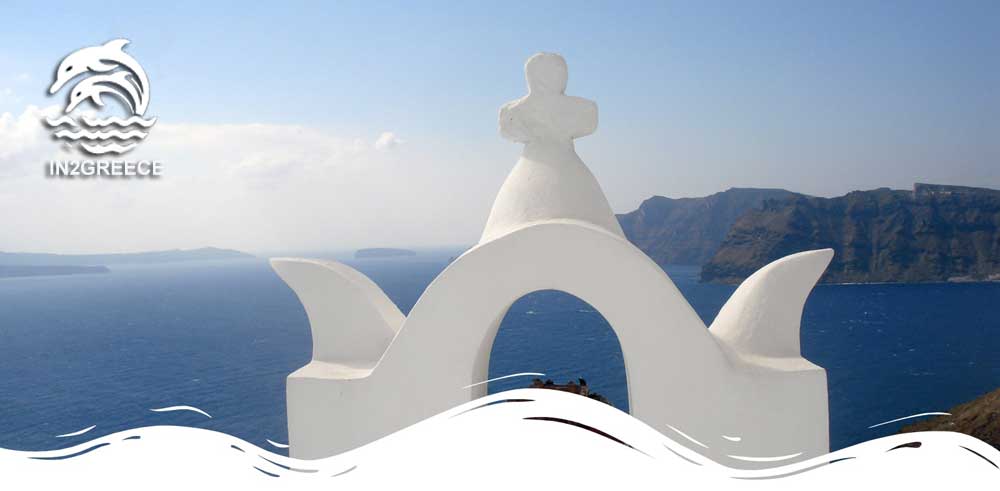
The structure was designed by Iktinos, one of the architects of the Parthenon in Athens, and it shares the Parthenon’s emphasis on harmony and proportion. However, the temple at Bassae is unique in its orientation and layout. Unlike most Greek temples that face east, this temple is oriented north-south, possibly to align with specific astronomical or religious significances. It’s built on a steep and uneven terrain, necessitating a complex foundation and an elongated cella (the main chamber of the temple), which bends slightly to accommodate the site’s natural contours.
One of the temple’s most remarkable features is the interior Corinthian column, which stands alone at the center of the cella, a rare feature in Greek temple architecture. This, along with the varied use of architectural orders, contributes to the temple’s reputation as a masterpiece of ancient Greek art and architecture.
Sculptural and Artistic Significance
The Temple of Apollo Epicurius was adorned with a frieze that depicted various mythological scenes, including battles between the Greeks and Centaurs and between the Amazons and Greeks. Though much of the sculpture has been lost or removed over time, what remains indicates the high level of artistic achievement. The frieze from the temple is of particular interest to historians and archaeologists as it provides insight into the stylistic transition from the Archaic to the Classical period in Greek art.
Preservation and Modern Recognition
The temple’s remote location contributed to its preservation over the centuries, though it also led to neglect. In the 19th century, the site was rediscovered, and its frieze was removed and transported to the British Museum in London, where it remains a subject of both admiration and controversy, emblematic of broader debates over the repatriation of cultural artifacts.
In recent decades, efforts have been made to preserve the Temple of Apollo Epicurius. A protective tent-like structure now covers the temple, shielding it from the elements while allowing continued access to visitors and researchers. Despite these modern interventions, the temple retains its aura of ancient mystique, standing as a solitary monument to the ingenuity and spirituality of the ancient Greeks.
